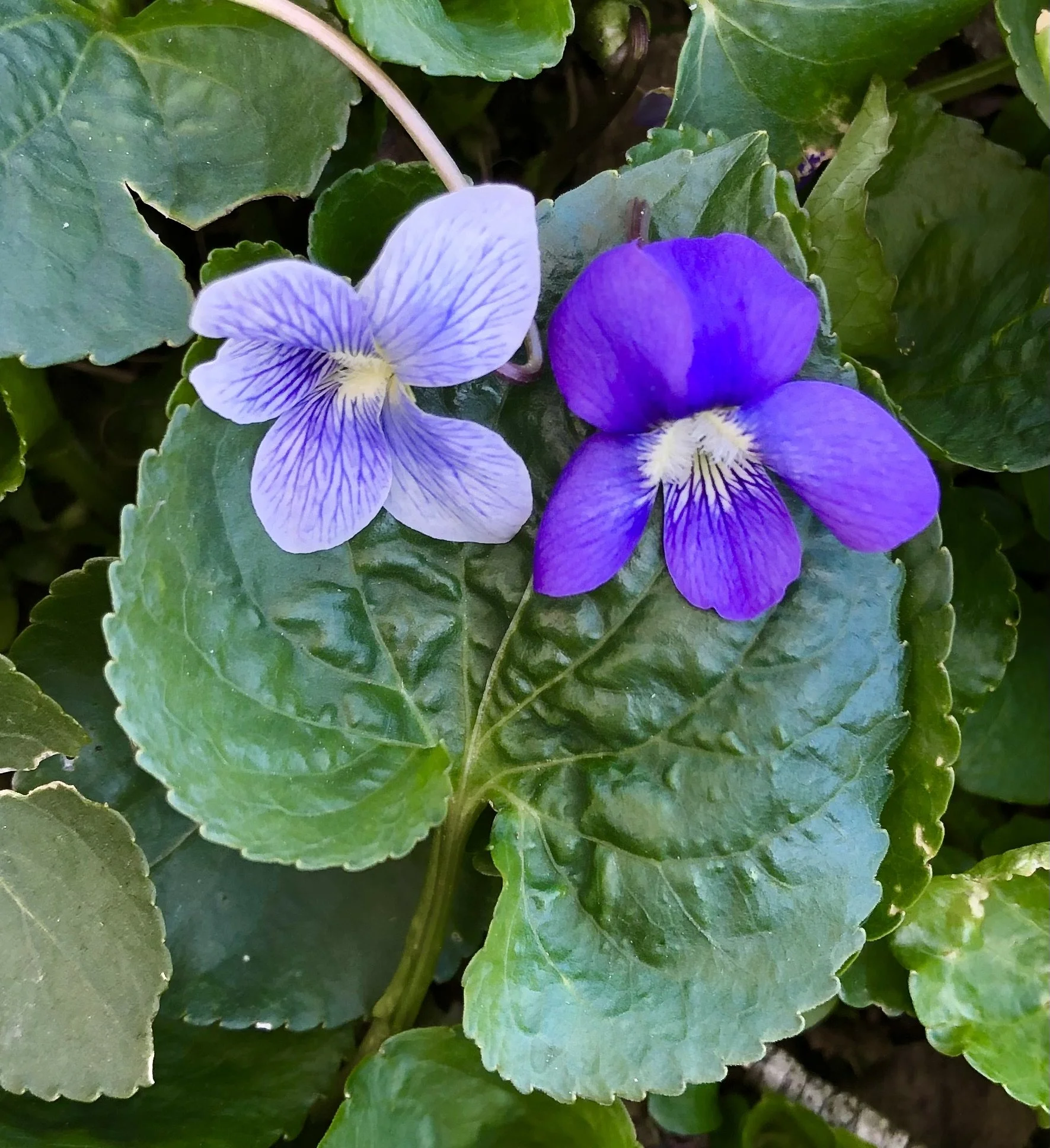Violet
Violet
Family: Violaceae
Many species of Violet are Native to Tennessee & Viola species grow in every state in North America. Violets are a low growing perennial ground cover that prefer moist shady areas, but they can spread into lawns and gardens. The large blue/purple flowers (sometimes yellow or white) grow on a single leafless stem and the leaves are heart shaped. Both the flowers and leaves are edible.
Caution: Violet roots can cause stomach distress & issues with breathing & blood pressure regulation. The leaves may cause an allergic reaction such as burning, itchiness, & minor skin eruptions.
Violet is Nourishing
Harvest the leaves and flowers for medicinal & culinary use. Violets are rich in minerals & high in vitamins C & A. Violet contains a mucilage that is known to help coat, soothe, & lubricate tissues.
Use the leaves to make a salad & use the flowers to garnish salads, cakes, & cookies. Violet can be used in a poultice (topical), tea (dried violet), cold infusion (to extract mucilage), nourishing infusion (use hot water & steep 4-8 hours), nasal/eyewash, violet flower syrup, violet oil, & tincture.
Violet flowers are known to “gladden the heart” and can help people through times of grief & heartache.
Violet History & Folklore
An Iroquois legend talks about two lovers from enemy tribes, a Warrior & a Maiden who ran away together & were killed. Blue Violets sprang up in the forest where their bodies fell & the birds & winds spread the flower seeds all over the Earth. Plucking the blue flowers was a reminder of constant love & the plant was used to detect bewitchment.
After Frederic Chopin, a famous composer & pianist died, his student Jane Sterling purchased all the violets she could find in Paris & covered his grave with them.
Napoleon sent violet bouquets to his wife every year on their anniversary & was even called “Corporal La Violette” (Corporal Violet) by his supporters.
Picture of Violet Oil by Kailani Achi
Violet- Herbal Uses
The Cherokee passed on their knowledge of using violets to the first settlers of Appalachia:
Violet leaves were used to make a poultice to relieve headaches & a poultice from the roots was applied to boils
Violets were soaked in water & used to relieve dysentery, colds, coughs, catarrh, used for blood medicine, & as a spring tonic
Infusion of Violet roots were used to soak corn seeds prior to planting to repel insects
Violet Leaves & stems were parboiled, rinsed, fried in fat & eaten seasoned with salt
Sources:
Sweet Violet Benefits: A Materia Medica http://mamarosemary.com/blog/2019/4/28/benefits-sweet-violet-materia-medica
The Ethnobotanical Uses of the Genus Viola by Native Americans https://avs.getcloseto.us/Violets_In_America/Ethnobotanical.htm
Wild Violet- Viola Odorata https://www.ediblewildfood.com/wild-violet.aspx




